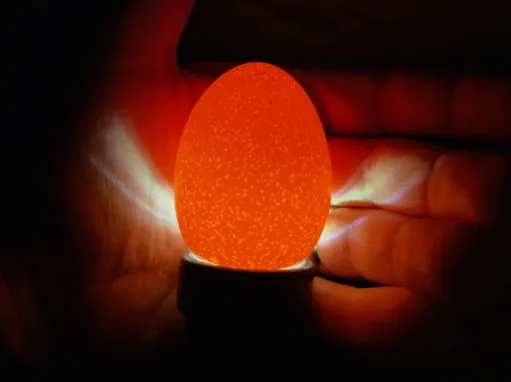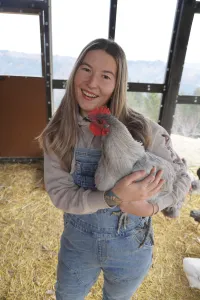


The Blog
Learn along side me as I share my Journey real time.

Common Misconceptions About Egg Incubation
Common Misconceptions About Egg Incubation
If you've ever thought about hatching your own chicks but felt intimidated by the process, you're not alone. Learning any new skill can be daunting. I remember buying my first incubator and it sat in the box for months because I didn't feel ready. But you can do it!
There's a LOT of misinformation floating around about incubating eggs—so today, we're busting some of the most common myths and setting the record straight!
Myth #1: You Need an Expensive Incubator
Truth: You don’t need a top-of-the-line, high-tech incubator to successfully hatch eggs!
While some high-end models have extra features like automatic egg turning and humidity control, plenty of budget-friendly incubators work just fine if you know how to manage the basics.
🔹 A simple incubator with steady temperature control, proper ventilation, and consistent humidity levels is all you need for a successful hatch.
🔹 Many homesteaders and backyard chicken keepers hatch eggs with affordable tabletop incubators.
🔹 Even DIY incubators can work—though they require a little extra monitoring.
The key is following a reliable incubation process—and I cover everything you need to know in my Egg Incubation Guide.
Myth #2: Incubating is Too Hard for Beginners
Truth: If you can follow simple steps, you can hatch eggs—no experience required!
I get it. The idea of managing temperature, humidity, and turning eggs can sound overwhelming. But guess what? Incubating eggs is actually super easy once you know what to do.
✔ Modern incubators do a lot of the work for you. Many have built-in thermometers, hygrometers, and automatic turners.
✔ You don’t have to be perfect—small fluctuations in temperature and humidity are normal.
✔ Step-by-step guidance makes all the difference—which is exactly why I created my incubation guide!
If you’ve been putting off incubating because you’re worried it’s too complicated, this is your sign to just start. I promise—it’s easier than you think!
Myth #3: Once You Put the Eggs in the Incubator, You Can Just Set It and Forget It
Truth: Incubating eggs isn’t hard, but it’s not completely hands-off either!
A lot of beginners assume that incubators do all the work—but that’s not entirely true. You still need to:
🔹 Monitor temperature & humidity daily – Even with automatic controls, slight adjustments might be needed.
🔹 Turn the eggs (if your incubator doesn’t) – Most eggs need to be turned at least three times a day to prevent the embryo from sticking to the shell.
🔹 Check for development – Candling eggs at days 7 and 14 helps ensure they are growing properly and lets you remove any that aren’t developing.
🔹 Lockdown period requires extra attention – The last few days before hatching (days 18-21) require stable humidity and no opening the incubator!
While it’s not complicated, it does require some involvement—but I’ll walk you through every step inside my Egg Incubation Guide so you can hatch healthy, thriving chicks with confidence.
Have You Heard These Myths Before?
Hatching your own chicks is one of the most fun, rewarding, and budget-friendly ways to grow your flock—and it’s WAY easier than you might think.
Which of these myths have you heard before? Did any of them hold you back from trying incubation? Let me know in the comments!
Ready to start incubating? Grab my Egg Incubation Guide for step-by-step instructions! And if you want to take your chicken-raising skills to the next level, my full Chicken Course will guide you from hatch to harvest.
Annie's Homestead is not affiliated by Facebook™ in any way. Facebook™ is a registered trademark of Facebook™ Inc
Branding and Website by RoyalT Studio

